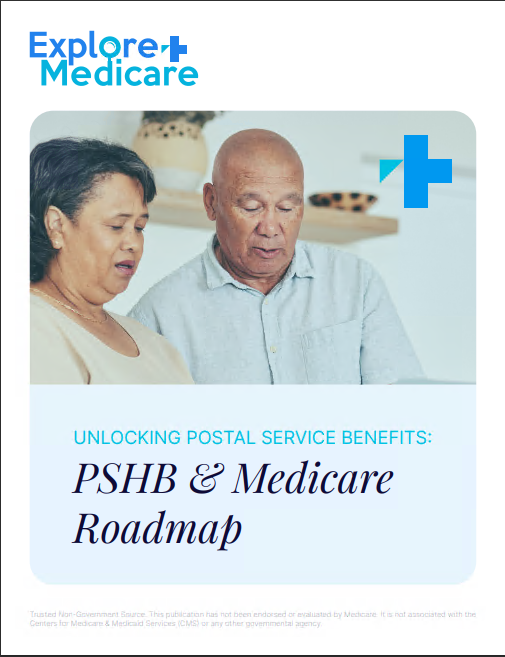Key Takeaways
-
Medicare Part A helps cover inpatient hospital care, but it does not mean everything is free. You still need to be aware of deductibles, coinsurance, and coverage limits.
-
Knowing the coverage rules, benefit periods, and what Part A doesn’t include can prevent surprise bills and give you peace of mind before a hospital stay.
Understanding Medicare Part A at a Glance
Medicare Part A, often called hospital insurance, is one of the foundational parts of Original Medicare. If you’re approaching a planned hospital visit or anticipating an unexpected stay, it’s essential to understand what Part A actually provides. You might assume it’s all covered, but in reality, there are structured benefits, timelines, and out-of-pocket responsibilities you need to prepare for.
Who Gets Medicare Part A and When
Most people become eligible for Medicare Part A when they turn 65. You’re automatically enrolled if you’re already receiving Social Security or Railroad Retirement Board benefits. Otherwise, you’ll need to sign up.
In some cases, you can qualify for Part A earlier:
-
If you’ve received Social Security Disability Insurance (SSDI) for at least 24 months
-
If you have End-Stage Renal Disease (ESRD)
-
If you have Amyotrophic Lateral Sclerosis (ALS)
What Medicare Part A Covers
Medicare Part A focuses on inpatient care and closely related services. Coverage generally includes:
-
Inpatient hospital stays (after being formally admitted)
-
Semi-private rooms
-
Meals while in the hospital
-
General nursing care
-
Medications and treatments during the stay
-
Critical access hospitals and acute care hospitals
-
Inpatient mental health care (up to 190 days in a lifetime for psychiatric facilities)
-
Skilled nursing facility (SNF) care under specific conditions
-
Hospice care for terminal illness
-
Limited home health services
Costs Associated With Medicare Part A
Even though many people don’t pay a monthly premium for Part A (based on work history), that doesn’t mean everything is free. Here’s what you should know about the other costs:
-
Deductible: In 2025, you pay a $1,676 deductible for each benefit period before Medicare Part A pays anything.
-
Coinsurance: After 60 days in the hospital, you start paying coinsurance:
-
Days 61–90: $419 per day
-
Days 91 and beyond: $838 per day for up to 60 lifetime reserve days
-
After lifetime reserve days are used: you pay all costs
-
-
Skilled Nursing Facility Coinsurance:
-
Days 1–20: $0 (covered by Medicare)
-
Days 21–100: $209.50 per day
-
After 100 days: all costs are your responsibility
-
Understanding the Benefit Period
A key concept in Medicare Part A is the benefit period. It’s not tied to the calendar year, and this can catch many people off guard. A benefit period begins the day you are admitted as an inpatient and ends when you haven’t received any inpatient hospital or SNF care for 60 days in a row.
-
You may have multiple benefit periods in one year.
-
Each benefit period comes with its own deductible.
-
Lifetime reserve days are limited and do not renew each benefit period.
Skilled Nursing Facility Coverage Under Part A
To qualify for skilled nursing facility coverage, you must meet strict criteria:
-
You must have a qualifying inpatient hospital stay of at least three consecutive days (not including discharge day).
-
You must enter the SNF within 30 days of leaving the hospital.
-
Your doctor must certify that you need daily skilled care.
Remember, long-term custodial care is not covered under Part A. If you only need help with activities of daily living, such as bathing or dressing, you won’t qualify for this benefit.
Hospice Coverage: What to Expect
Medicare Part A also covers hospice services if you are terminally ill and choose palliative care over curative treatment. Services include:
-
Pain management and symptom control
-
Nursing and doctor services
-
Grief and loss counseling for you and your family
-
Short-term inpatient respite care for caregivers
You must sign a statement choosing hospice care and have a doctor certify your life expectancy is six months or less. Coverage continues as long as you meet hospice eligibility criteria.
What Part A Doesn’t Cover
While Medicare Part A covers a lot, it doesn’t cover everything. You’ll want to be aware of the exclusions:
-
Outpatient services, such as lab tests or X-rays (covered by Part B)
-
Doctor visits outside of inpatient care
-
Long-term care (custodial care)
-
Private-duty nursing
-
Personal items (TVs, toiletries, etc.) during a hospital stay
-
The first three pints of blood, unless donated
Being aware of these gaps can help you explore other ways to manage health care costs.
Preparing Financially for a Hospital Stay
If you’re expecting a hospital stay in 2025, here’s how you can prepare financially:
-
Check your benefit period: Knowing whether you’re starting a new period helps anticipate costs.
-
Know your deductible status: If you’ve already met it, your out-of-pocket costs may be lower.
-
Review lifetime reserve days: Consider your usage carefully since they are limited.
-
Coordinate with Medicare Part B: Some services might fall under Part B even during a hospital stay.
-
Plan for post-hospital care: If you’ll need rehab or home health, understand what is and isn’t covered.
Common Misunderstandings About Medicare Part A
Misunderstandings often lead to surprise bills. Here are a few areas to clarify:
-
Being in the hospital doesn’t always mean inpatient: You must be formally admitted. Observation status is considered outpatient and billed under Part B.
-
Skilled nursing isn’t long-term care: Many people confuse the two. Skilled nursing is short-term and medically necessary; long-term custodial care is not covered.
-
Hospice does not mean giving up: Hospice care under Part A focuses on quality of life and comfort, not abandonment of care.
Duration Limits and When Coverage Ends
It’s important to know how long you can receive certain benefits:
-
Hospital stays: You are covered for up to 90 days per benefit period, plus 60 lifetime reserve days.
-
Skilled nursing: Coverage ends after 100 days per benefit period, and only if you continue to meet the criteria.
-
Hospice care: As long as your provider certifies that you are terminally ill, coverage continues in benefit periods that renew every 60 days.
Once coverage ends, you are responsible for 100% of the costs unless you have other coverage in place.
Why Timing and Documentation Matter
Every benefit under Medicare Part A relies on correct timing and medical documentation:
-
Admission status must be clearly documented.
-
Transitions from hospital to SNF must happen within the required timeframe.
-
Re-certifications for hospice must occur every 60 days.
Failing to meet these timing or documentation rules can result in denied claims and unexpected expenses.
Before Your Hospital Stay: A Checklist
To make sure you’re covered and ready, go through the following checklist:
-
Confirm your admission status is inpatient, not observation.
-
Check how many days you’ve already used in your benefit period.
-
Confirm your deductible status for this benefit period.
-
Understand what care you may need afterward and what’s covered.
-
Discuss with your provider about your likelihood of needing SNF or hospice.
-
Ask if any part of your stay may fall under Part B.
Planning Ahead Helps You Stay Informed
Knowing how Medicare Part A works gives you a sense of control during stressful health situations. By being proactive, asking questions, and understanding your responsibilities, you can make more informed decisions about your care.
Be Prepared Before a Hospital Stay
Medicare Part A offers essential hospital coverage, but it isn’t limitless and doesn’t work in isolation. Understanding timelines, benefit periods, and cost-sharing is crucial to avoid financial strain. Whether you’re planning a surgery or want to be prepared for emergencies, getting familiar with how your hospital benefits work will help you feel more confident about your coverage.
For additional support tailored to your situation, speak with a licensed agent listed on this website.









